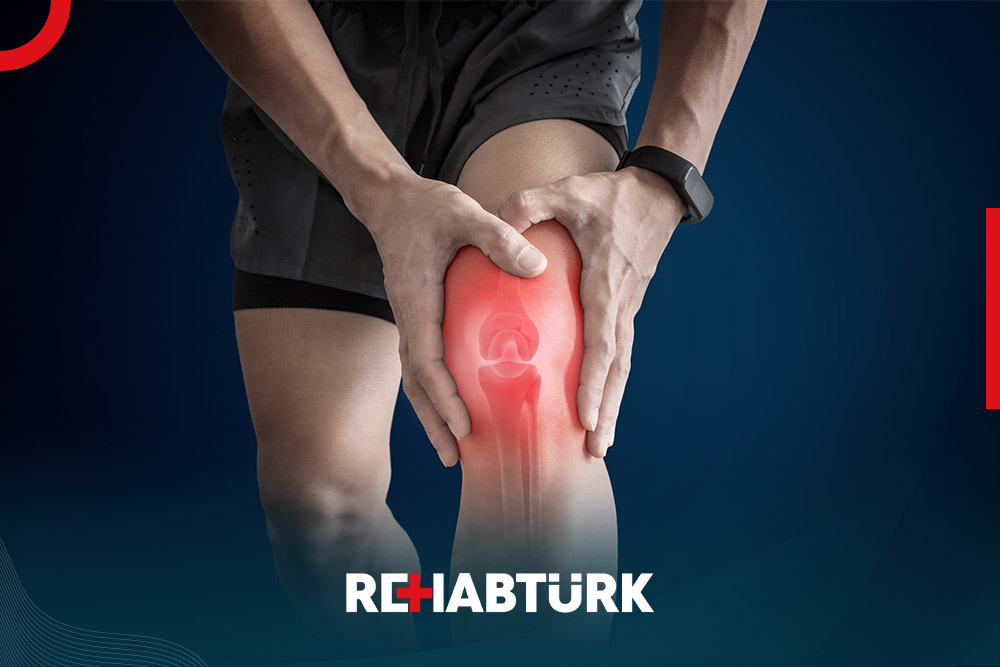Knee Arthroscopy in Türkiye
Knee arthroscopy is a surgical technique that can diagnose and treat problems in the knee joint.
During the procedure, your surgeon will make a very small incision and insert a small camera — called an arthroscope — into your knee. This allows them to see the inside of the joint on screen. The surgeon can then investigate a problem in the knee and, if necessary, correct the problem using small tools inside the arthroscope.
Arthroscopy diagnoses many knee problems, such as a meniscus tear or an irregular patella (kneecap). It can also repair joint ligaments. There are limited risks to the procedure and the outlook is good for most patients. Recovery time and prognosis will depend on the severity of the knee problem and the complexity of the procedure required.
Why do I need knee arthroscopy?
Your doctor may recommend knee arthroscopy if you have knee pain. Your doctor may already have diagnosed the condition causing the pain, or he or she may order an arthroscopy to help find the diagnosis. Either way, arthroscopy is a useful way for doctors to confirm the source of knee pain and treat the problem.

Arthroscopic surgery can diagnose and treat knee injuries, including:
- A rupture of the anterior or posterior cruciate ligaments
- Meniscus tear (the cartilage between the knee bones)
- The patella is out of site
- Pieces of torn, loose cartilage
- Baker’s cyst removal
- Knee fractures
- Swollen synovial membrane (lining in the joint)
How do I prepare for knee arthroscopy?
Your doctor or surgeon will advise you on how to prepare for surgery. Be sure to tell them about any prescription or over-the-counter medications or supplements you are currently taking. You may need to stop taking certain medications, such as aspirin or ibuprofen, for weeks or days before the procedure.
You should also refrain from eating or drinking for six to 12 hours before surgery. In some cases, your doctor may prescribe an analgesic for postoperative pain. You must fill out this prescription in advance so that it is ready after the procedure.
What happens during an endoscopy?
Your doctor will give you an anesthetic before the knee arthroscopy. This is possible:
- Local (numbing your knee only)
- Topical (numbing you from the waist down)
- General (Perfectly puts you to sleep)
If you are awake, you may be able to see the action on the screen.
Your surgeon will start by making small incisions, or cuts, in your knee. Then sterile saline or saline is infused to widen your knee. This makes it easier for the surgeon to see inside the joint.
The arthroscope inserts into one of the incisions and the surgeon will look around your joint using the camera attached. The surgeon can see the images produced by the camera on a monitor in the operating room.
When the surgeon identifies a problem with your knee, he or she may then insert small tools into the incisions to correct the problem. After surgery, the surgeon drains the saline solution from the joint and closes the incisions with stitches.
What are the risks associated with endoscopy?
There are risks associated with any type of surgery, although they are rare. Each surgery has the following risks:
- Excessive bleeding during the procedure
- Infection at the surgical site
- Difficulty breathing due to anesthesia
- An allergic reaction to anesthesia or other medications given during surgery
There are also risks specific to knee arthroplasty, such as:
- Bleeding inside the knee joint
- Formation of a blood clot in the leg
- Intra-articular infection
- knee stiffness
- Injury or damage to the cartilage, ligaments, meniscus, blood vessels, or nerves of the knee
What is the recovery period after knee arthroscopy?
This surgery is not aggressive. For most people, the procedure takes less than an hour depending on the specific procedure. You will likely go home the same day to recover. An ice pack should be used on your knee and a bandage. Ice will help reduce swelling and reduce pain.
At home, you should have someone to take care of you, at least for the first day. Try elevating your leg and icing it for a day or two to reduce swelling and pain.
You will also need to change the bandage. Your doctor or surgeon will tell you when to do these things and for how long. You will probably need to see your surgeon for a follow-up appointment a few days after the procedure.
Your doctor will give you an exercise regimen to follow at home to help your knee recover, or he or she will recommend a physical therapist so you can use your knee normally. The exercises are essential to help restore full range of motion and strengthen your muscles. With proper care, your outlook after this procedure is excellent.
Knee arthroscopy in Türkiye
Knee arthroscopy has a high success rate in Türkiye and is not a complicated procedure for an experienced doctor.
If you want to undergo knee arthroplasty in Türkiye, contact our doctors now.
